Capitol Reef National Park petroglyphs, orchards, and pie
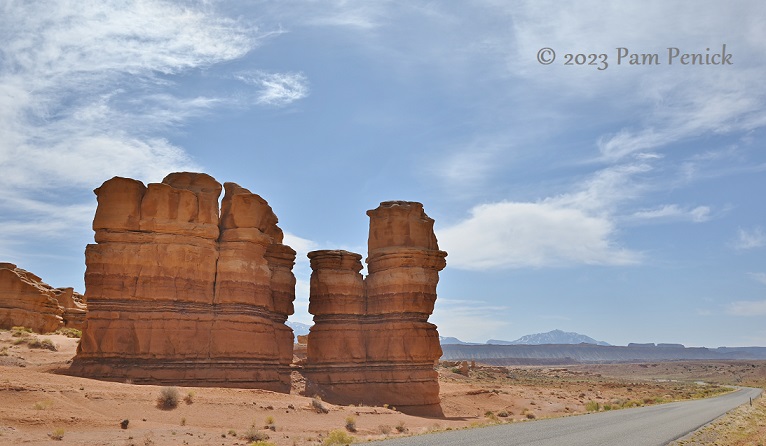
At Capitol Reef National Park in south-central Utah, ancient layers of stone stand exposed in a red-rock desert. Formed into turrets, reefs, and domes by geologic uplift and then the slow erosion of water over millennia, the park’s layered rock tells the history of the Earth to those who can read it. It has also witnessed the comings and goings of human residents since around 300 CE.
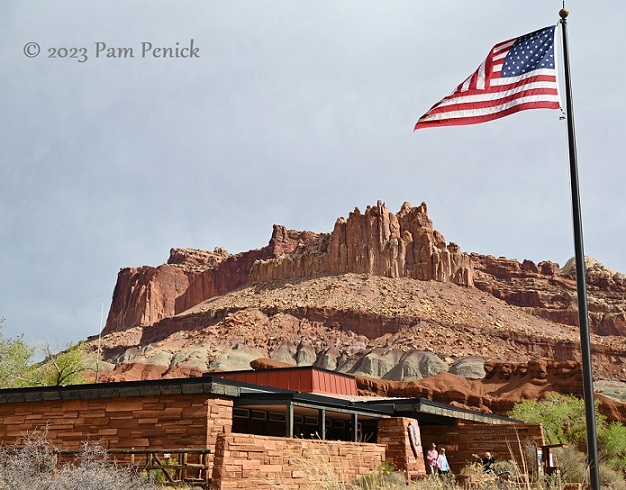
We visited in early May during our RV road trip, and I enjoyed the cultural stories of Capitol Reef as much as its castle-like pinnacles and hills of folded rock.
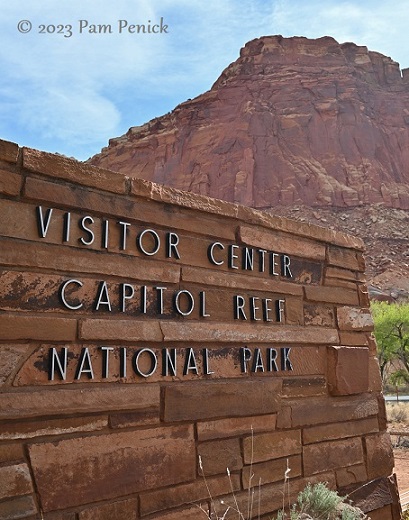
Capitol Reef is described as a wrinkle in the Earth’s surface. How was the wrinkle formed? First, ancient seas, deserts, swamps, and rivers rose and fell over the eons to create 10,000 feet of sedimentary rock.
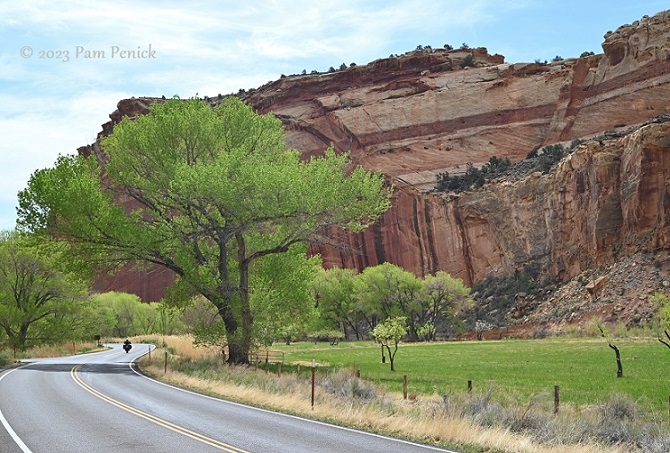
Between 50 and 70 million years ago, two tectonic plates collided, and the land was pushed up as high as 7,000 feet. The rock didn’t crack under the slow pressure that lifted it up. Instead it bent and folded over the fault line. Water did the rest between 1 and 6 million years ago, eroding the upper layers of rock to expose the ancient, uplifted sedimentary layers. And voila, a layer cake of stone.
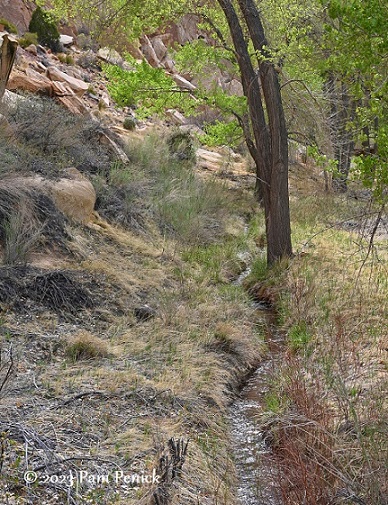
A meandering stream along the base of a cliff continues the work that created this unusual landscape.
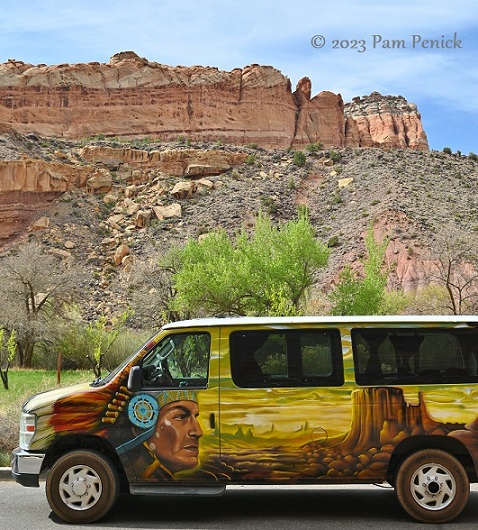
Ancestors of today’s Hopi, Zuni, and Paiute tribes, known as the Fremont people after the river that runs through the canyon, made permanent settlements here and farmed the flood plain for a thousand years, from around 300 to 1300 CE.
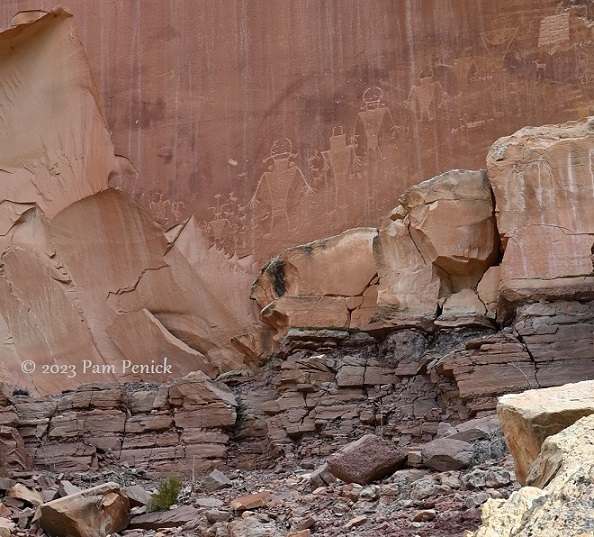
They carved images of people or spirits and animals into the red rock, creating petroglyphs that remain to this day.
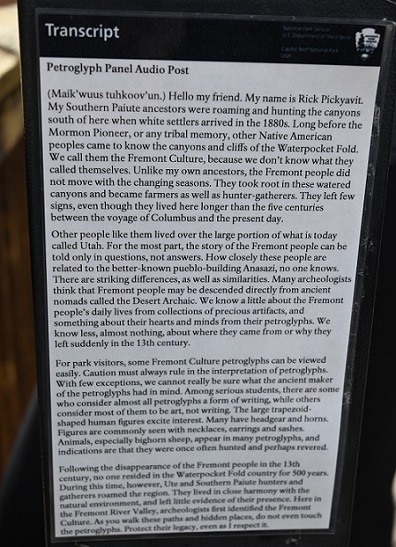
Whatever they meant to convey may be shrouded by time, but these lasting impressions of their culture captured my imagination.
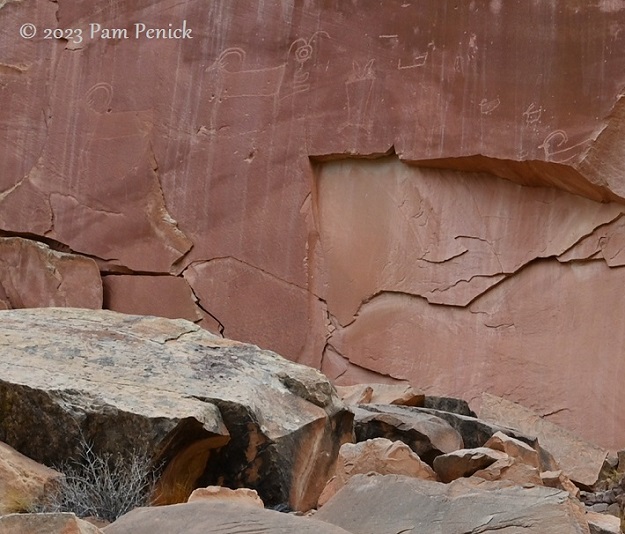
Around 1300 CE, the Fremont people left this area. No one knows why. Afterward, nomadic tribes passed through, but no one else settled here until the Mormons came in the 1880s.
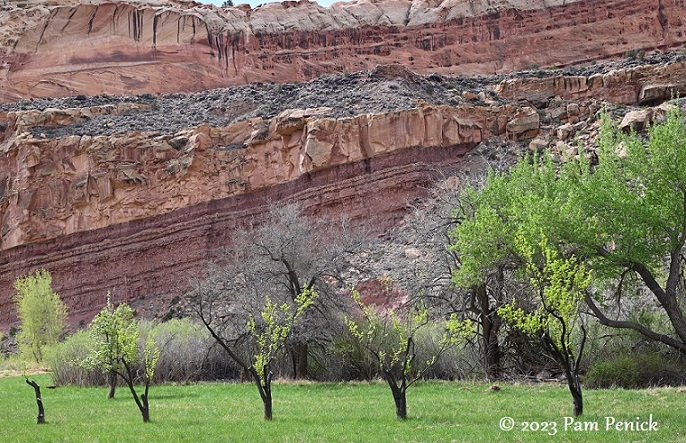
Mormon settlers eked out a living by planting orchards of apple, pear, cherry, apricot, peach, and other fruit trees in the fertile flood plain.
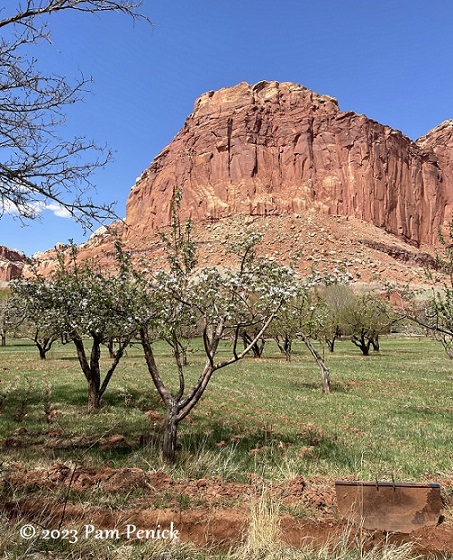
They named their town Fruita, and a handful of families lived here for decades, until the last family sold their land to the National Park Service in 1969. Irrigation ditches and heirloom fruit trees remain, maintained by NPS.
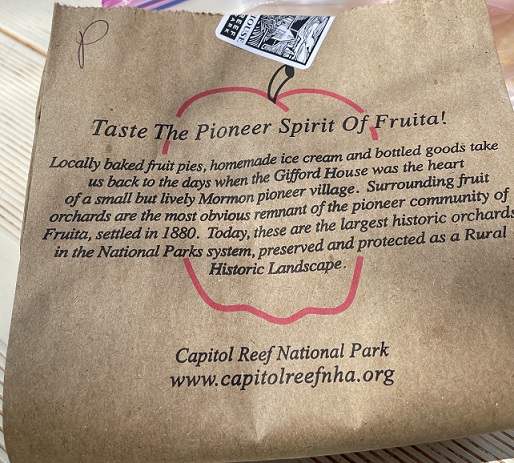
At the Gifford Homestead, a preserved Mormon farm, little fruit pies are sold daily — and sell out daily! We’d heard it was imperative to sample the pie and happily complied.
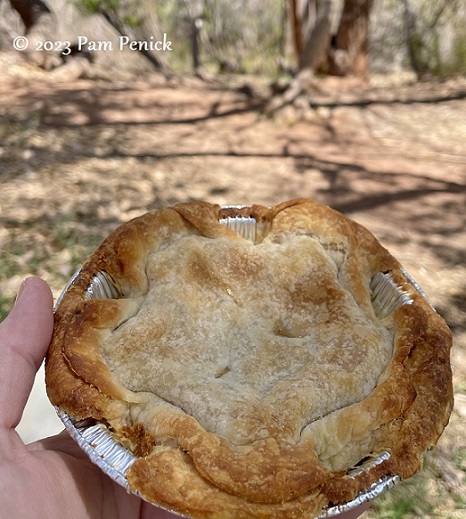
We devoured a peach pie after a picnic lunch along the river.

Yum!
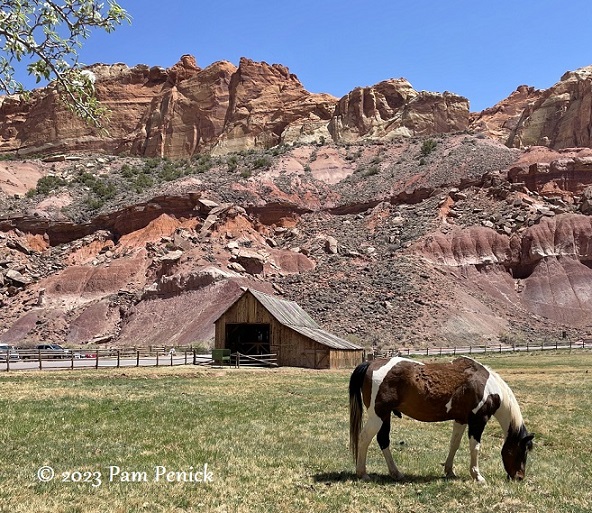
The Gifford barn and horses greet you at the homestead, with those dramatic canyon walls making a sunset-hued backdrop.
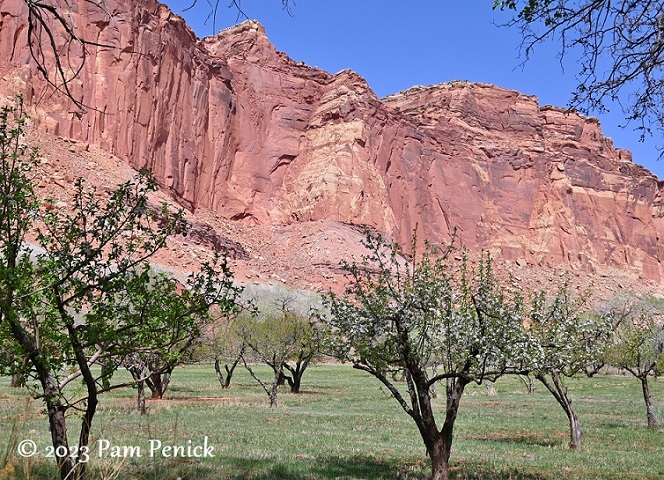
In early May, most of the fruit trees had already flowered, but the apples were still holding onto cottony blossoms.
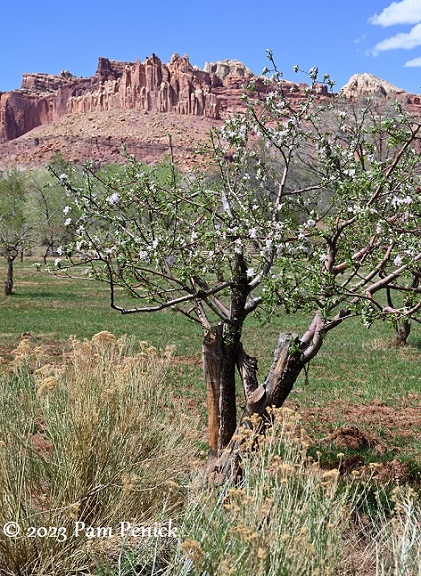
One more tree against those striking cliffs
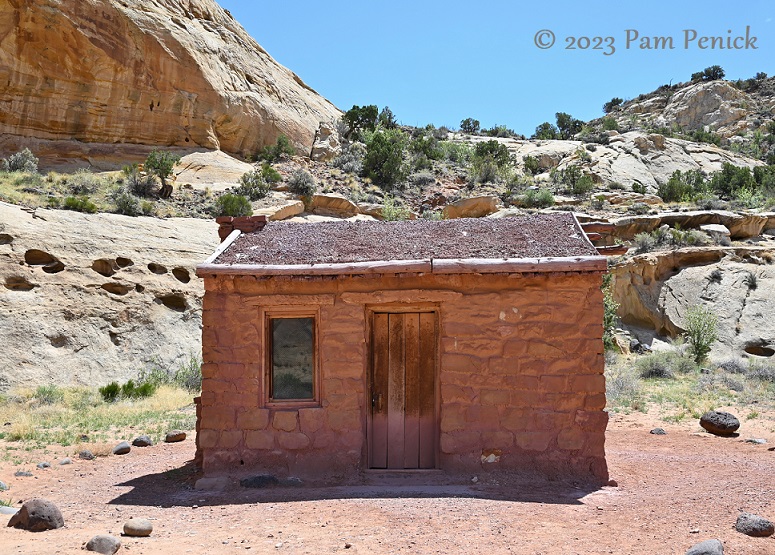
Other structures from the Mormon settlers remain. Elijah and Tabitha Jane Behunin settled here in the 1880s but lasted only a year. Their family of 15 called this rock-walled cabin home, if you can believe it.
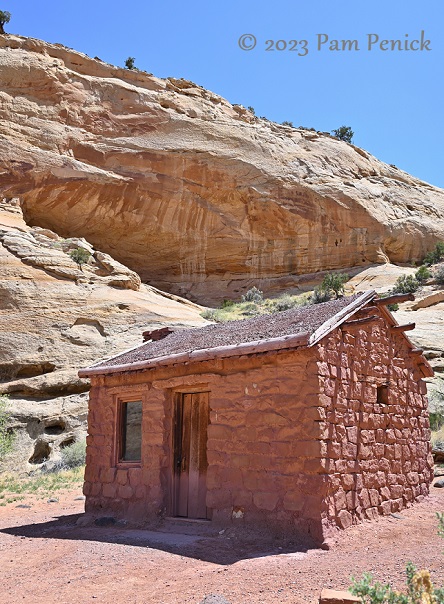
“It was not an easy place to homestead. The crops they planted were washed out by flash floods, and the cabin was only large enough for Elijah, Tabitha Jane, and their youngest children. The older boys slept in a sandstone alcove, while the older girls slept in a covered wagon box.”
https://www.nps.gov/places/behunin-cabin.htm
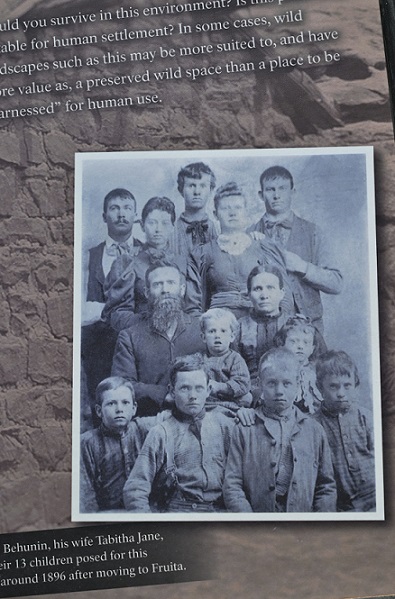
Here’s an old photo of these hardy souls.
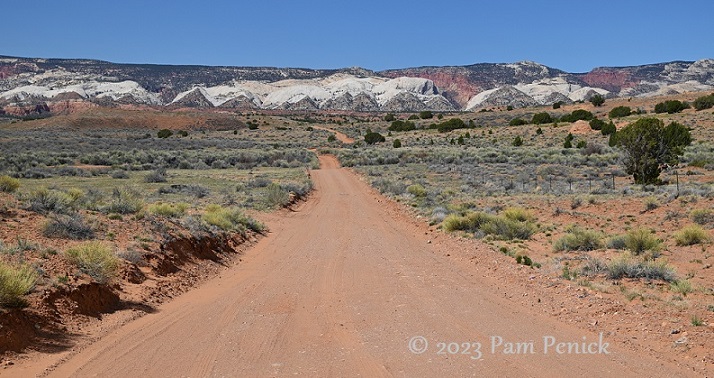
Capitol Reef is much less developed than Zion or Bryce Canyon, and the views are less dramatic as well. But still interesting! We took one of the red dirt roads toward the rocky reef.
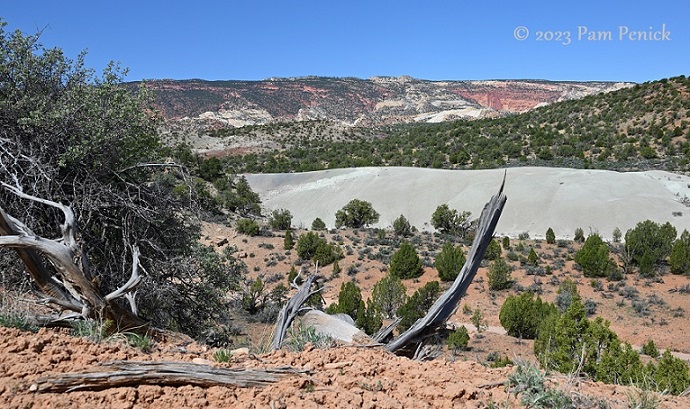
I wish I could show you the Capitol Dome that the park is partly named for, but I don’t remember seeing it. But we got an eyeful of the “reef,” the uplifted hills that blocked travel for early settlers. Some sections of domed rock are smooth and gray, like a humpback whale coming up for a breath of air.
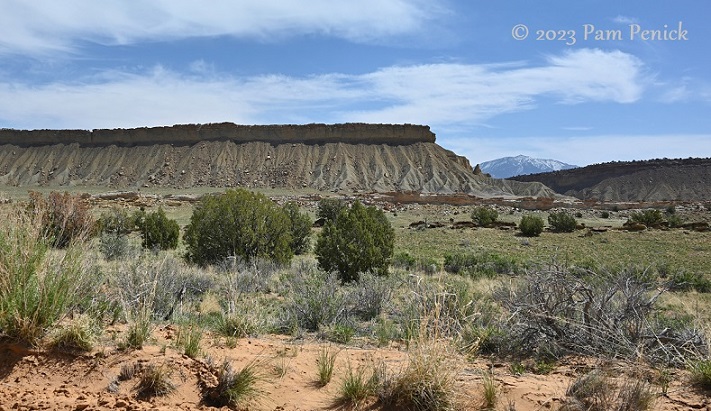
Photos don’t adequately convey the strangeness of the rock formations, like this slope-sided mesa with a narrow fin of rock along the crest.
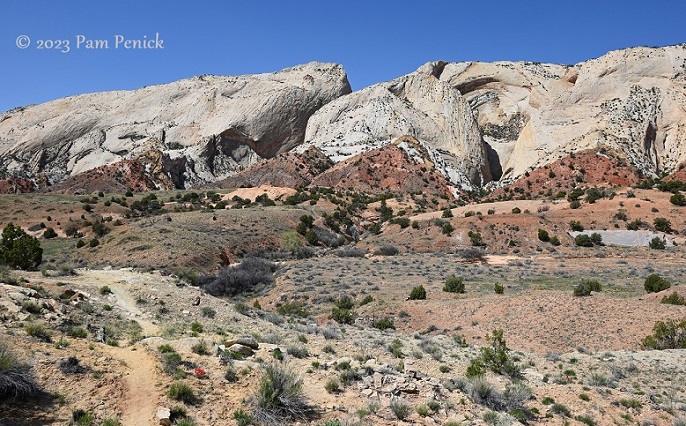
Or these white-rock hills that resemble dollops of whipped cream.
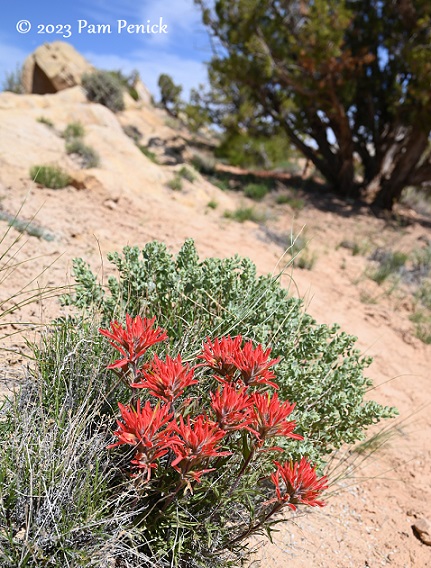
At overlooks we admired the views and the wildflowers that added spots of color in a harsh landscape.
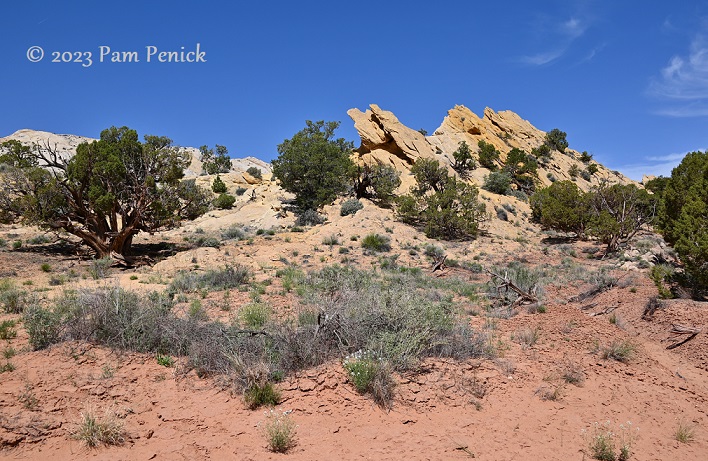
Diagonal uplift
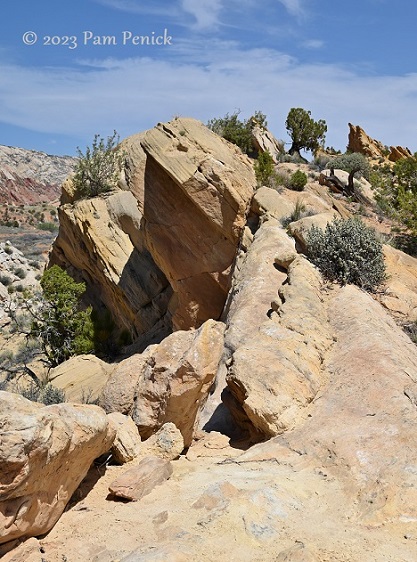
And more
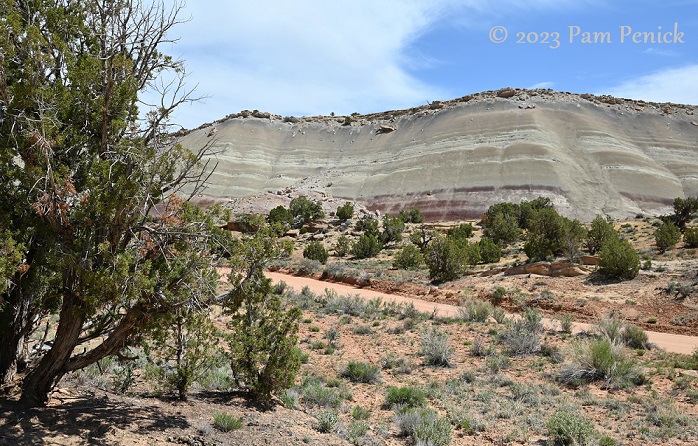
Gray and purple rock layers with an eroded fin on top
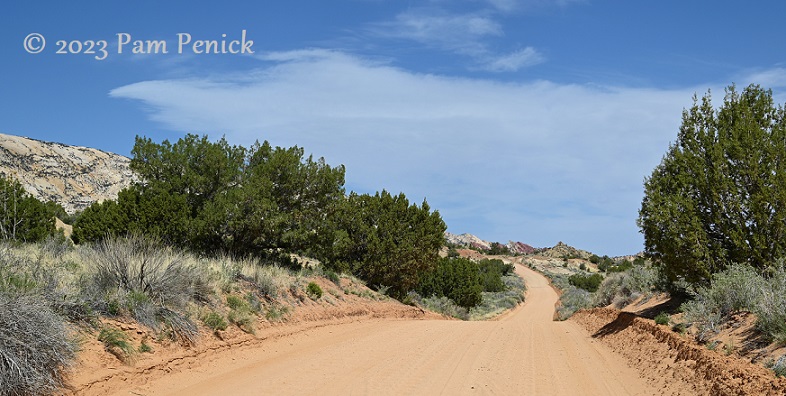
This view almost reminds me of the Texas Hill Country. But we had far to go yet before turning to home.
Up next: Beautiful Canyonlands National Park and thrilling Shafer Trail. For a look back at the vast scenery of Grand Staircase-Escalante National Monument, click here.
__________________________
Digging Deeper
Come learn about gardening and design at Garden Spark! I organize in-person talks by inspiring designers, landscape architects, authors, and gardeners a few times a year in Austin. These are limited-attendance events that sell out quickly, so join the Garden Spark email list to be notified in advance; simply click this link and ask to be added. Season 8 kicks off in fall 2024. Stay tuned for more info!
All material © 2025 by Pam Penick for Digging. Unauthorized reproduction prohibited.


What an interesting place! The scenery is beautiful, and the stories of how the land formed and of the previous residents are intriguing. Hopefully we’ll be able to visit one day. Thanks again for your posts about your trip – I’m enjoying them very much!
I’m happy to hear that, Maggie. 🙂 Thanks for coming along on the virtual parks trip!
Ok, thanks to your photos, that is on my Bucket List now!!
Thanks, Paula. All the national parks are on mine, but there are SO many and far-flung. I hope to see as many as I can. Each one offers spectacular scenery.
Beautiful photos! I’ve so enjoyed following along on your travels. I continue to appreciate your many talents.
Thank you for the lovely compliment, Marilou!
Not AS dramatic, but dramatic enough to be staggeringly breath taking. Both odd and gorgeous, arid and lush.
Seeing whipped cream in the white-rock hills suggest you still have the peach pie on your mind. What a treat in the middle of the wilderness.
Yes, that pie stuck in my mind, hah!